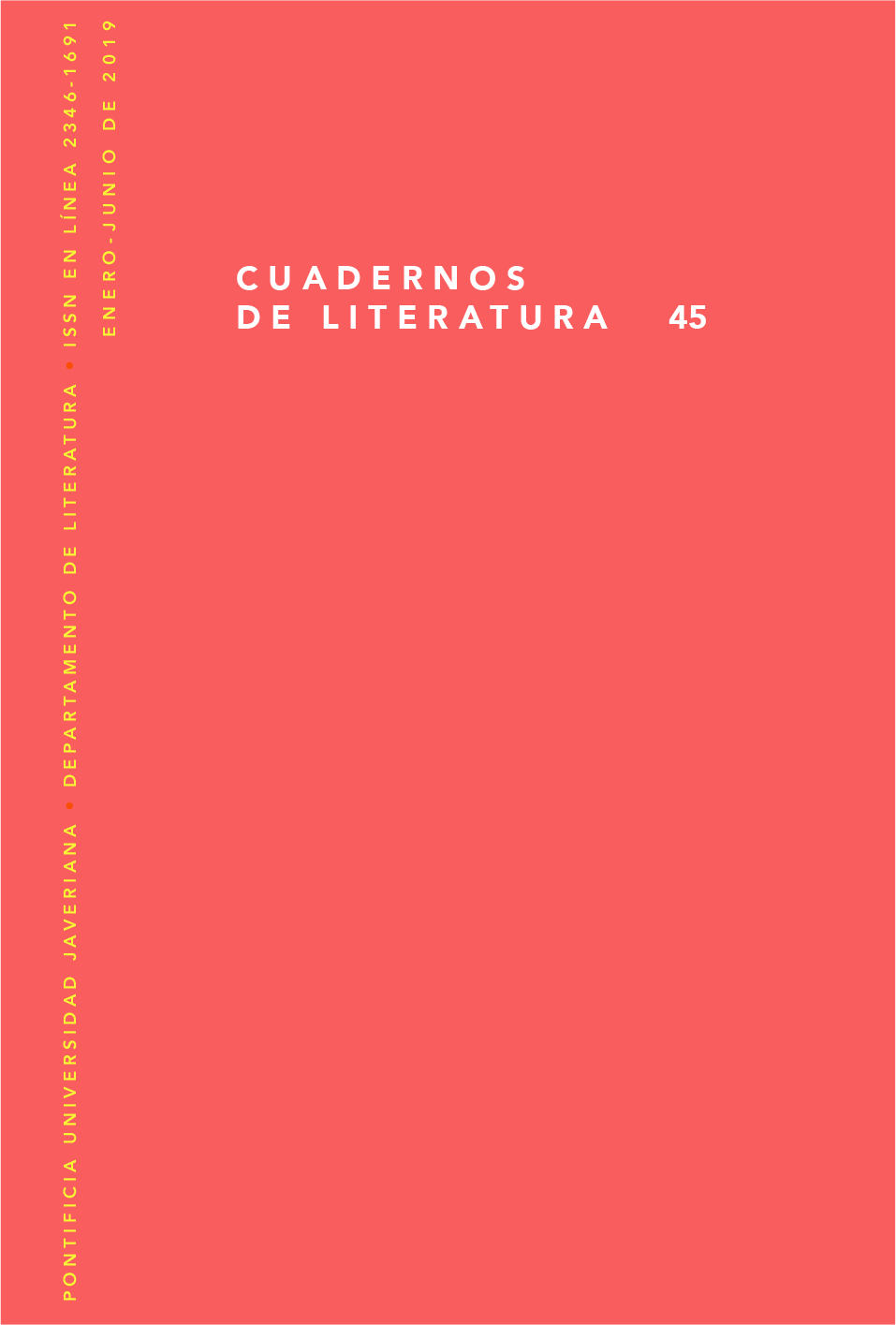Abstract
La Crónica (1883-1886), a morning paper from Buenos Aires, based its distance from party fights both on its title and on its editorial structure. It had three sections: a literary, a scientific and a journalistic one, so politics was out of the focus in the traditional way. It main genre was “alta crónica”, which focused both in local characters and places. These “reportajes” allowed their chroniclers to find out and to experience several features of the genre which will endure for long time. Thereby, it offers a counterpoint to development of the chronicle genre and a different look both at literary and journalistic modernization.
Aliata, Fernando. “Cultura urbana y organización del territorio”. Nueva Historia Argentina. III: Revolución, República, Confederación (1806-1852). Dir. Obra Juan Suriano. Dir. Vol. Noemí Goldman. Buenos Aires: Sudamericana, 1998. 199-254. Impreso.
Alonso, Paula. Entre la revolución y las urnas. Buenos Aires: Sudamericana, 2000. Impreso.
Bajtín, Mijaíl. “El problema de los géneros discursivos”. Estética de la creación verbal. México: Siglo Veintiuno, 1952-1953/1982. Impreso.
Beltrán, Oscar. Historia del periodismo argentino. Buenos Aires: Sopena, 1943.
Bernabé, Mónica. “La crónica en debate”. http://www.revistaanfibia. com/la-cronica-en-debate/. Web. 3 de octubre de 2016.
Chevalier, Michel. “Géographie et paragéographie”. L´Espace Géographique 1 (1989): 5-17. Impreso.
Cimorra, Clemente. Historia del periodismo argentino. Buenos Aires: Atlántida, 1946. Impreso.
Conrad, Sebastian y Dominic Sachsenmaier. Competing Visions of Global Order: Global Moments and Movements, 1880s-1930s. Basingstoke: Palgrave MacMillan transnational history series, 2007. Impreso.
Fritzsche, Peter. Berlin 1900. Prensa, lectores y vida moderna. Buenos Aires: Siglo Veintiuno, 1998/2008. Impreso.
Galván Moreno, Carlos. El periodismo argentino. Amplia y documentada historia desde sus orígenes hasta el presente. Buenos Aires: Claridad, 1943. Impreso.
Gasparini, Sandra. Espectros de la ciencia. Fantasías científicas de la Argentina del siglo XIX. Buenos Aires: Santiago Arcos, 2012. Impreso.
Gorelik, Adrián. La grilla y el parque. Espacio público y cultura urbana en Buenos Aires, 1887-1936. Bernal: Universidad Nacional de Quilmes, 1998. Impreso.
Kern, Stephen. “Speed”. The Culture of Time and Space. 1880- 1918. Cambridge: Harvard University Press, 1983. Impreso.
Laera, Alejandra. “Cronistas, novelistas: la prensa periódica como espacio de profesionalización en la Argentina (1880-1910)”. Historia de los intelectuales en América Latina. La ciudad letrada, de la conquista al modernismo.
Dir. Carlos Altamirano. Ed. Vol. Jorge Myers. Buenos Aires: Katz Editores, 2008. 495- 522. Impreso.
Laera, Alejandra. El tiempo vacío de la ficción. Las novelas argentinas de Eduardo Gutiérrez y Eugenio Cambaceres. Buenos Aires: Fondo de Cultura Económica, 2004. Impreso.
Liernur, Jorge F. y Graciela Silvestri. El umbral de la metrópolis. Transformaciones técnicas y cultura en la modernización de Buenos Aires (1870-1930). Buenos Aires: Sudamericana, 1993. Impreso.
Majluf, Natalia. “Pattern-Book of Nations: Types and Costumes in Asia and Latin America, 1800-1860”. Reproducing Nations. Types and Costumes in Asia and Latin America, 1800- 1860. Nueva York: Americas Society, 2006. Impreso.
Quereilhac, Soledad. Cuando la ciencia despertaba fantasías. Prensa, literatura y ocultismos en la Argentina de entresiglos. Buenos Aires: Siglo Veintiuno, 2016. Impreso.
Quesada, Ernesto. “El periodismo argentino”. Nueva Revista de Buenos Aires III, 9 (1883): 72-101. Impreso.
Ramos, Julio. Desencuentros de la modernidad en América Latina. Literatura y política en el siglo XIX. México: Fondo de Cultura Económica, 1989. Impreso.
Rotker, Susana. La invención de la crónica, México D.F.: Fondo de Cultura Económica, 1992/2005. Impreso.
Servelli, Martín. “Enviados especiales: la emergencia del reporterismo viajero en la prensa porteña de entre-siglos (XIX-XX)” (conferencia). Seminario Permanente de Humanidades, UdeSA. http://live. v1.udesa.edu.ar/Unidades-Academicas/departamentos-y-escuelas/ Humanidades/Eventos?eid=9092. Web. 1 de agosto de 2016
Szir, Sandra. “De la cultura impresa a la cultura de lo visible. Las publicaciones periódicas ilustradas en Buenos Aires en el Siglo XIX. Colección Biblioteca Nacional”. Prensa argentina del siglo XIX. Marcelo Garabedian et al. Buenos Aires: Teseo, 2009. Impreso.
Twyman, Michael. Breaking the Mould: The First Hundred Years of Lithography. London: The British Library, 2001. Impreso.
Weill, Georg. El periódico. Orígenes, evolución y función de la prensa periódica. México: Limusa-Noriega, 1992. Impreso
Cuadernos de Literatura is registered under a Creative Commons Attribution 4.0 International Public License. Thus, this work may be reproduced, distributed, and publicly shared in digital format, as long as the names of the authors and Pontificia Universidad Javeriana are acknowledged. Others are allowed to quote, adapt, transform, auto-archive, republish, and create based on this material, for any purpose (even commercial ones), provided the authorship is duly acknowledged, a link to the original work is provided, and it is specified if changes have been made. Pontificia Universidad Javeriana does not hold the rights of published works and the authors are solely responsible for the contents of their works; they keep the moral, intellectual, privacy, and publicity rights.
Approving the intervention of the work (review, copy-editing, translation, layout) and the following outreach, are granted through an use license and not through an assignment of rights. This means the journal and Pontificia Universidad Javeriana cannot be held responsible for any ethical malpractice by the authors. As a consequence of the protection granted by the use license, the journal is not required to publish recantations or modify information already published, unless the errata stems from the editorial management process. Publishing contents in this journal does not generate royalties for contributors.


